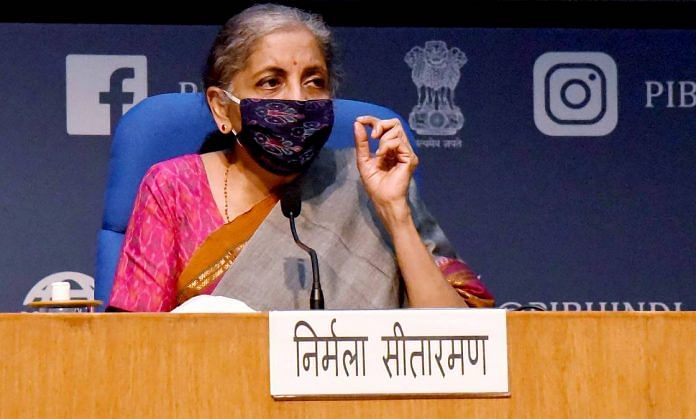New Delhi: The clamour for an income tax cut is increasing among various sections, with even those from the ruling BJP favouring a tax relief for the middle class.
However, economists point out that fiscal constraints could prevent any major tax relief for the common man. They say other methods like raising capital expenditure may work better to boost demand.
“One has to recognise that the fiscal space is very limited. Giving personal income tax relief is not the best way to revive demand,” said D.K. Srivastava, chief policy advisor at Ernst and Young. “Part of the increase will go to consumption and some will go into savings. Same is the case with cash transfers to people.”
“The best way to revive demand is a direct increase in government capital expenditure,” Srivastava added. “Since resources are highly constrained, direct augmentation of capital expenditure that has a high output and employment indicator is the best option.”
Economists expect the government to boost demand mainly through an infrastructure spending push rather than any tax relief.
In an interview to ThePrint earlier this week, Arvind Panagariya, former vice-chairman of NITI Aayog, had said the front-loading expenditure may be enough to bring the economy back to pre-Covid levels, and an additional stimulus may not be required.
He suggested measures such as payment of goods and services tax dues to states, reimbursement of refunds to taxpayers, timely payment of dues to companies from government departments, and transferring PM-Kisan payments to farmers in one go instead of three tranches.
Finance Minister Nirmala Sitharaman will present her most challenging Budget next week as the government looks to boost demand by sustaining the economic recovery that is evident from the second half of the fiscal year.
The Indian economy is expected to contract by over seven per cent in the current fiscal before bouncing back to double digit growth in 2021-22.
Though an increase in growth rates will help the government in improving tax collections, it is staring at a massive rise in expenditure in the current fiscal, mainly on account of the need to fund infrastructure, health and defence spending.
The Budget for 2021-22 will be presented at a time when the government is faced with a huge spurt in expenditure to finance the vaccine rollout as well as the rising defence expenditure requirement to counter the dual threat of Pakistan and China.
Significant tax relief unlikely
Government sources said a significant tax relief is unlikely but there could be some minor tweaks to encourage investments in affordable housing, as the government tries to revive demand and encourage people to spend.
There is also expectation of a more favourable long-term capital gains tax regime for investors. Economists, however, also do not favour levying a Covid cess, pointing out that such a move will not help in reviving demand.
“It is not a good idea,” Panagariya had said.
N.R. Bhanumurthy, vice-chancellor at Bengaluru’s Dr B.R. Ambedkar School of Economics, said any policy measure to revive the economy — either on the demand or the supply side — is the need of the hour.
“Tax incidence is very poor in this country. I don’t think reducing income tax rates is an option,” he said. “It won’t have much of an impact on demand revival as the base is low. Even of the 6-7 crore people who file their tax returns, many do not pay taxes.”
He added that corporate taxes have already been brought down.
Of the nearly 6.5 crore tax returns filed for assessment year 2019-20, more than four crore tax returns reported an income of up to Rs 5 lakh. With the government providing a tax rebate for those earning upto Rs 5 lakh effective 2019-20, a rough calculation shows that only 2.5-3 crore people may be paying income tax.
“GST rate cuts are the quickest way to revive the demand of the economy,” he said. “Given the fact that changes to the GST need to be determined by the GST Council, using tax policy in the Budget is not possible in the current structure.”
Also read: Realty tax sop is unlikely to make a dent in metro cities due to caps






